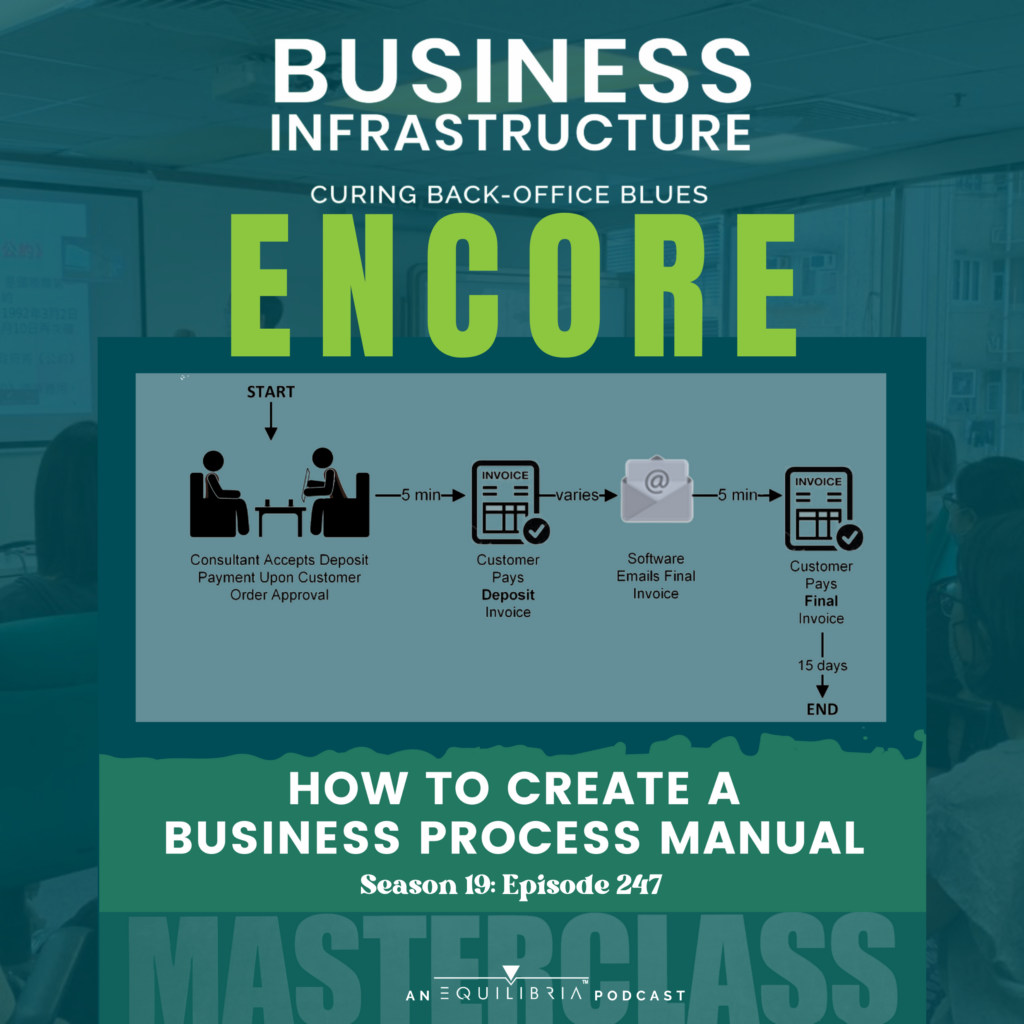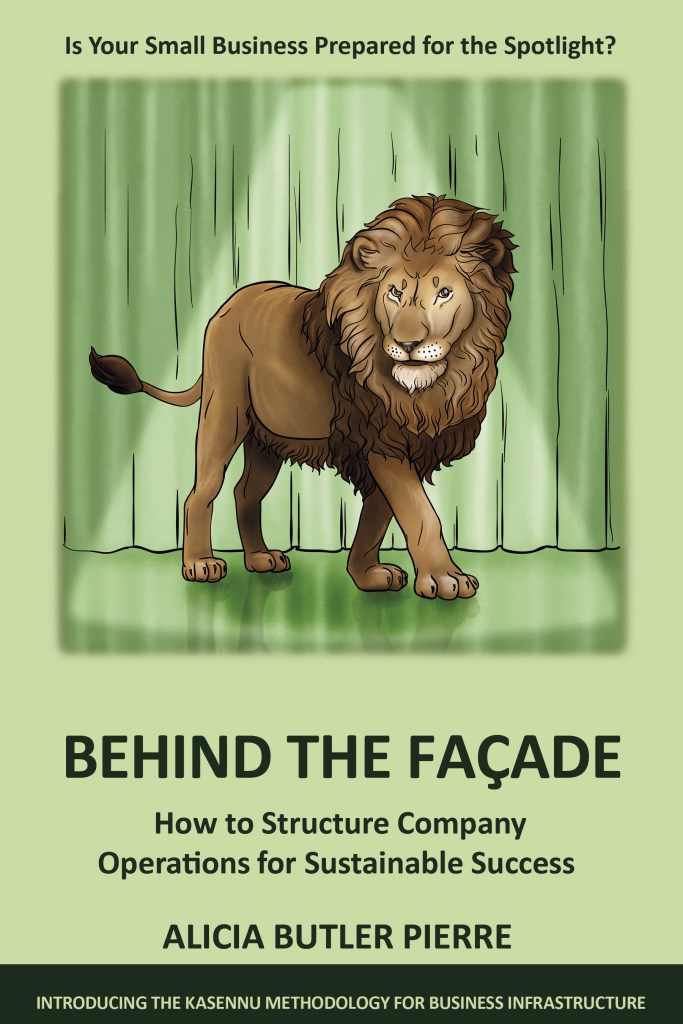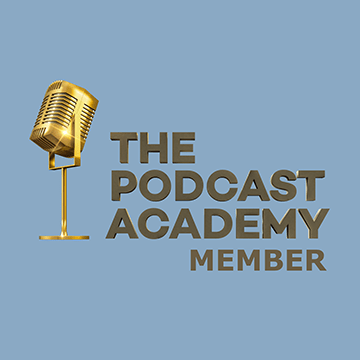Transcript
[THIS EPISODE ORIGINALLY AIRED ON MARCH 27, 2022]
We’ve come to the final episode in our 13-part audio masterclass on business infrastructure!
At this point, you’ve heard six stories of entrepreneurs and leaders in small businesses trying their best to keep their cool in the midst of chaotic fast growth. If you’ve missed any of those episodes, be sure to go back and listen to them so that you can follow along with the info contained in this episode.
Behind the impressive façade of the businesses featured in this masterclass, lies operational landmines that threaten to destroy everything these founders and leaders have worked so hard to build.
Thanks in part to the consultants they each work with, they can operate businesses that look just as good on the inside as they do on the outside. Those consultants introduce various elements of business infrastructure and you’re able to get a detailed understanding of what they do together in six follow-up episodes that serve as D-I-Y tutorials.
Each story ends with a cliffhanger, hinting at a business process workshop that takes place at a resort north of Atlanta, GA! And that’s what this episode is about – you’re going to get an audio-based front-row seat to this workshop.
The founders and leaders are greeted by D. Jude Teal, the owner of the resort who attributes his company’s success to having a scalable business infrastructure.
I’m Alicia Butler Pierre, the host of this podcast and the inventor of the Kasennu framework for Business Infrastructure. I’m also the instructor that the characters from the stories meet at this business process workshop. Although I could spend several episodes teaching how to document business processes, unfortunately, we have to keep this as streamlined as possible. So, I’ll teach you some basics for identifying and documenting the key processes in your company.
Get ready to take notes because by the end of this episode, there should be no more excuses for not having your processes in place. Not only that, you’ll learn how this work prepares your processes for quality and improvement frameworks like Lean and Six Sigma.
It’s time to secure your position as a Smooth Operator!
This is episode 247, how to create a Business Process Manual. Let’s start the show.
Welcome to Business Infrastructure, the podcast about curing back office blues of fast-growing businesses. If you’re a business owner or operator looking for practical tips and solutions to scaling your business in a sustainable manner, you are in the right place. Now, here’s your hostess, Alicia Butler. Pierre.
One of the most common signs of uncontrollable growth is high turnover. That turnover can come from angry customers or angry staff or both. But when it happens, do you find yourself blaming others If so, then pay close attention to this episode. Always blame a process before you blame a person.
And here’s why. When you hire new people, it’s your responsibility to make sure they have the information needed to perform their jobs. If they don’t, then it will likely result in poor quality, and that’s when customers get angry. They’ll blame you, and then you shift the blame to your staff. But there’s a way to avoid all of this madness.
The solution processes, specifically a business process manual. So what is a business process manual A business process manual, also commonly known as an operations manual, is an important equity-building tool that describes your organization’s operations with a level of detail and precision that allows your team to work without your daily presence.
In fact, it represents the seventh and final element of the CARU framework for business infrastructure. It’s the one that will likely take you the longest to establish and put in place.
Notice, I use the word establish not complete, and that’s because documenting processes is dynamic.
In fact, none of your business infrastructure is static. It will evolve over time as you continue to make improvements based on feedback from your customer’s team, as well as external market forces. As a reminder, if you’re listening to this show or this episode for the very first time, business infrastructure is a system for linking people, processes, and tools into a cohesive framework, allowing you to scale your organization sustainably and profitably. In each story of the masterclass, you heard about a highly anticipated business process workshop. The workshop begins with each founder or leader being presented with an Emerald tablet, a beautiful plaque containing guideposts for creating a process, not a people-dependent business.
I’ll share more details of it toward the end of this episode, but first, there’s a total of nine steps I’ll describe for creating a business process manual, but it’ll be divided into two parts. That’s because before you start documenting, you should first identify the processes. As you’ll soon hear, there are many ways to document a process, and though I can’t describe them in detail during this episode, the best way to get all of those details is by reading my book Behind the Facade, how to Structure Company Operations for Sustainable Success. Make sure you look at chapter eight, which is all about the business process manual.
Okay, before we get into the two parts of the business process manual and all of the associated steps, I first need to share with you at least two quick disclaimers. The first is, when many people hear the word process, they start thinking about Lean Six Sigma. This is not, I repeat, this is not going to be a crash course on Lean Six Sigma, and here’s what you need to know for the purposes of this discussion.
In this episode, lean Six Sigma is all about process improvement. In order to improve a process, you first need to know what that process is. That’s what we will cover in this episode. The Business Process Manual helps you identify the processes for your organization and then actually document the current state or the way those processes are currently being performed. If you wanna then get into a future state or improve a particular process, that’s when you start getting into Lean Six Sigma.
Okay, the second disclaimer, we will not cover how to actually document a process. I’ll give you some very general basic guidelines for documenting a process, but unfortunately, again, we just don’t have the time in this particular episode yet alone. This type of masterclass is in a purely audio format to go through all of the different ways that you can actually document a process. So now that we have those disclaimers out of the way, let’s get to the very first thing that you wanna do, which is prepared.
As we’ve started off with all of these how-to tutorials in this masterclass, the things you’ll need to prepare for your business process manual are a computer, laptop, or tablet. You’ll need access to that large table, so the same large table preferably that you used for your business person analysis, and business design blueprint exercises. Try to use that same table again for your business process manual.
You’ll also need those index cards that you came up with that have all of the different tasks or activities, as well as the departments that you identified from your business parts analysis exercise. Go ahead and grab those index cards as well.
You’ll also need a set of new index cards, preferably a different color.
Next, it would help if you have access to spreadsheet software, so something like Microsoft Excel or Google Sheets. Also a word processing software, Microsoft Word, or maybe even Google Docs.
You’ll also need a recording device, so something like your mobile phone, something where you can record, I should clarify, where you can record audio and video. So it could be something as simple as your mobile phone, a camera, a webcam that you attach to your computer, zoom or even loom for that matter.
You’ll also need access to a YouTube or a Vimeo channel, a mapping tool to map out processes.
So something like Microsoft, vio, PowerPoint, miro, there’s a ton of processing tools that are out there in the market. And then finally, you’ll need a place to store all of these beautiful processes once you start to actually document them. And some popular storage items. Cloud-based, including Dropbox, Google Drive, SharePoint, OneDrive, ever note notion, click up. There are so many of them out there. So if you already have one that’s preferred that your team is already using, just go ahead and continue using that as well.
Let’s get into part one of your business process manuals. And that is identifying, the very first step in identifying your processes is actually grouping tasks into processes. You’re going to take those index cards from your business par analysis exercise, the ones that you already have, and all of the activities already written out onto those individual index cards. They’ve already been grouped and organized into departments.
You might even still have those stick figures that you used. But for the purposes of this business par analysis, it’s really those index cards that you’ll need. Go ahead and take out one department in its associated index cards and spread that across the table, spread those index card across the table. I then want you to group similar tasks within that department. Start to group those together. Let me give you an example. If you are looking at tasks that are associated with your accounting department, for example, you might see a task that says something like email invoice to the client. Another task might say, collect payment from clients, and then a third task might say, generate invoices in QuickBooks. Now, as you’re looking at all of these tasks, those three tasks in particular, you might group those together and say, you know, if I had to associate these three tasks with a process, I would call that an accounts receivable process.
That’s where you’re going to take those new clean set of index cards, again, that is preferably a different color, and write the words, accounts receivable process. And then you’ll just place that above those three cards, those three cards, representing those three tasks that I just verbalized. You’ll just group those together, and you’ll repeat this until all of the activities within a department are assigned to a process. Now, I should state this. It is very possible that you might have something that’s just so mundane and, and, and so second nature for everybody or anyone who might ever perform the process that is just not worth the effort of actually documenting it in that case, for example, I’m thinking checking email or checking mail or checking voicemail, whatever, is just a really mundane, very, very simple task. It very well may not have a process that it can be rolled up into, and that’s okay.
The idea is to try to jumpstart your effort in creating what will ultimately become a process inventory. So once you’ve done that for that one department, in this case, the accounting department, you then wanna repeat that exercise for all of the other departments within your company. Now, if you need help coming up with some of the names, of processes, or if you’re just getting, you just need something maybe as a guide to kind of help jog your memory as to or kickstart the effort of figuring out how to name a process, go ahead and take a look at, in appendix B, you’ll actually see a list of 29 processes that any organization should consider having. Step number two, create a process inventory. This is when you’re going to take that spreadsheet tool that you’re using, whether it’s Excel or something like Google Sheets as an example, and you’re going to create a table in the very first row.
Type the following into different columns or cells along that very first row, department, priority processes, KPIs, a unit of measurement, gatekeeper, and administrator. So you’re going to have, let’s see, 1, 2, 3, 4, 5, 6, 7 columns or cells completed or typed out, filled in, whatever you wanna call it, in that very first row of your table, go back to that very first column in the first row, which is for the department, and now start to type in the name of every single one of your departments in that first column. And as you’re typing the name of each department, go back and then color code the cell that each department name is typed into. So for accounting, as an example, if you previously assigned the color green, or let’s say the color black to your accounting department, you would then just color code it or shade that color in on your table in your spreadsheet software.
Now you can start to populate the rest of the table with the following information. So under the process column, you’re literally going to type the name of every process that you’ve identified from your index cards. So it might help to bring your laptop or your tablet over to the table where you’ve been working and identify all of these different processes per department. Go ahead and start typing all of that information into this table. Under the KPIs column, you’re going to type in the metrics that you want to use to monitor the performance and effectiveness of each process. A very simple K P I, just as an FYI, that almost every process involves is what we call cycle time. In other words, how long should it take to perform that specific process, of course, there are a number of other metrics that you might want to really monitor for a specific process.
Next, under your unit of measurement column, a unit of measurement, what I mean by that is you want to represent the unit and the frequency of each K P I. So if we’re talking about cycle time, do you wanna measure that in seconds, minutes, hours, days, months What is that unit of measurement for that specific K P I It could also be something like, wait, it could be a ratio. It could be a very specific number. And if you go under or above that number, once that process is performed, that could mean a good or a bad thing. It’s up to you to decide. Moving along to the next column in the table, we have a gatekeeper. Now, this is a term that I like to use, but oftentimes I’ve seen this quite a bit in corporate environments as well. This is the role of the person who is acting as the process owner.
So this is the person who ultimately is responsible for monitoring the process, and if the process ever needs to be updated, changed, or improved, it’s that gatekeeper, that process owner who has ultimate responsibility for making sure that that process always contains the latest, greatest, most up-to-date information. And then finally, in the last column for the administrator, is the person or the people who actually perform the process. So you might have a list of several names. It could just be one person. If you wanna see an example of what a completed table looks like, make sure you go and check out this episode, show [email protected], and we’ll have an example there that you can take a look at. And of course, there are also examples in the book. Step number three, prioritize the processes. That’s the one column that isn’t filled in your table at this point.
So this is the person who ultimately is responsible for monitoring the process, and if the process ever needs to be updated, changed, or improved, it’s that gatekeeper, that process owner who has ultimate responsibility for making sure that that process always contains the latest, greatest, most up-to-date information. And then finally, in the last column for the administrator, is the person or the people who actually perform the process. So you might have a list of several names. It could just be one person. If you wanna see an example of what a completed table looks like, make sure you go and check out this episode, show [email protected], and we’ll have an example there that you can take a look at. And of course, there are also examples in the book. Step number three, prioritize the processes. That’s the one column that isn’t filled in your table at this point.what you wanna do here is determine the order in which you will document these processes. Imagine you have a spreadsheet now that could very easily have, hmm, let’s say 35 processes that you’ve identified throughout your entire organization. Well, of those 35 processes, where is the highest priority That’s the process that you wanna put a number one next to. What’s the second most important process And when I say priority, I’m talking about these red hot items where if you could get in there and document those today, it would make things flow so much more seamlessly in your company. Or it could be that you really need to focus on a particular process because there’s money that’s linked to it, or you’re losing money as a result of not having this process documented. Or you’re starting to hire more and more people, and you definitely need to make sure that certain processes are documented before those new people start to train and onboard at your company.
Whatever the criteria are for your prioritization, just make sure that that’s very clear. And again, if you have, let’s say, 35 different processes that you’ve identified, you’re literally going to label them or number them one to 35. One is this is the process that we absolutely must document first all the way down to 35, which is, eh, you know, if we don’t get to this process right away, it’s not the end of the world, but at least we know it’s here and that we’ve recognized that it’s something that we do, in fact, at some point in time need to document. So now we’re ready to move on to the second part of the business analysis, which is the actual documentation.
Step number four, determine the best documentation method. Whenever you’re getting ready to document a process, always consider the audience of that particular process, and that’s because the format that you ultimately use can vary depending on the recipient or the audience, again, of that particular process. So always ask yourself, what is the best way to share the information Is your audience more visual, or auditory Do they need something that’s really short, concise, and can fit onto one page because they’re constantly on the go Or do they need more detail, something that’s in a longer format A business process can be represented in many formats, and some of the most popular ones are the procedure format, which is also known as a standard operating procedure or an S O P, and the flow chart or process map format, which is more visual. And that standard operating procedure is definitely more detailed.
Probably what most of you think of, honestly, when you think of a process is actually a procedure, which is something, again, very long form, very, very detailed. Now, there’s also video, the video format, you can record these really short tutorials that teach people how to perform either an entire process or specific pieces of that process. And then finally, there are checklists and templates. Now, I do mention this with a caveat. They are not designed to replace an S O P, but they actually augment an s o p or even a process map and video for that matter. So I wouldn’t think of a checklist as something that would completely replace or serve as the process is, in and of itself, but rather it’s something that’s used as a tool to facilitate the implementation if you will, or the execution of a particular process. I hope that makes sense to you.
Step number five, document. Take those grouped tasks that you’ve put together on your table, the associated process card, or the index card with the name of that process. Those grouped tasks actually serve as the basis for starting your documentation. So remember earlier we had those three different tasks that were accounting related, and we decided, well, these three things happen to describe what we think could become ultimately an accounts receivable process. Now, it’s not a stretch to think that Sometimes you can have writer’s block, for example, and you just don’t know where to begin. Where do I even start to document this process Always go back to those tasks? Make sure that you’re processed regardless of the format that you use ultimately to represent. It includes those tests, those tasks, believe it or not, actually kind of jumpstart that documentation effort. I always recommend writing a standard operating procedure version or format first.
And the reason is that it’s the format that provides usually the most details for a process. I also recommend that you use word processing software, again, like Microsoft Word, and Google Docs, and create a table. And in that table, you’ll have four columns. The first column is a step, and the second column is action. The third column is who’s responsible or who is the person that performs that step And then the last column, the fourth one is the tool. Any tool that is used to perform that particular step, whether it’s a piece of equipment or software, for example. As you write all of those steps, start to ask yourself, where can things go wrong It’s very rare that you’re able to just easily go from step one to step two to step three, all the way on to the end of the process without something breaking.
So start to play devil’s advocate, if you will, and really start to pick that process apart. And as you start to ask yourself, where can things go wrong The best way to capture that in an s o p format is in the form of questions and answers. So for example, if the step is to email an invoice to a client, the question might then be, did the client receive the email If yes, go to step number two. If no, these are the steps, you know, and then you start to type out the steps to ensure that that client does in fact receive the email. Does that make sense So again, you’re looking at all of these steps, you’re trying to figure out where things usually go wrong, and you start to write those conditional statements, those if-then statements to help guide the reader through the entire process.
And in the event something does go wrong, they at least have some type of troubleshooting mechanism included in the body of that process. Now, here’s the other really cool thing about the standard operating procedure. It can also serve as a script for future videos. If you decide that the best way to represent the processes as you want to share them with other people on your team, if you decide that the best way to do that is through video, you can actually take that standard operating procedure document and start to divide it up into smaller chunks of information that can be included in videos. And again, this is where you can use a tool like Zoom , you can use your webcam, you can use your mobile phone, however you want to capture that information. Usually if you’re showing something on the screen how to use a particular software, that’s where tools like Loom and Zoom can be particularly effective.
The standard operating procedure also lets you know or provides a foundation for creating your process map or flowchart version of the process. Yes, you can start mapping without doing the standard operating procedure format first. But again, if you want this to go as smoothly and quickly as possible, just as a rule of thumb, I’ve always found it so much easier to start with that standard operating procedure first and then actually map out the process. And then finally, you can always use templates. I know there is a tool called Process Street that has all kinds of process templates and checklists out there. We also, here at Equilibrium, we have the process shop where you can also, it’s our online store. And you can also purchase process templates. I’m not going to advocate for one tool over another, but I will say this, if you decide to start using templates just to kind of kickstart your process documentation effort, there’s absolutely nothing wrong with that.
In fact, I highly encourage you to do that if you can find something that that best suits your needs. And if you do find something, a template that covers the majority, if not all of the content that you need, make sure that you are able to customize it if it does not currently have all of the content that you need. And not only can you customize it, make sure that you can save a copy of that, that template outside of that company’s tool. And the reason that’s important is because you don’t wanna become completely dependent on another tool when it comes to storing all of your processes. You want these processes to be very easy to access. And think about it, if you have a company with 50 people on your team, do you really need 50 different licenses just so that people can view certain documentation.
Those are the types of things that you wanna be on the lookout for here at Equilibria. With our process shop, you can absolutely, once you purchase a a particular set of templates, you can customize them and tweak them however you see fit. You can also obviously save it outside of the tool because once you purchase the template, it’s yours. But again, I’m not advocating for one set of templates over another. I’m just kind of giving you a warning as to what to be on the lookout for if in fact you do decide to start using templates. Now, here’s some other rules of thumb I’d like to share with you as it relates specifically to documentation. Make sure that you provide enough detail so that anyone who is reviewing that document for the first time can reasonably follow along and produce the same result as if you or someone else who is performing that process and is very seasoned and experienced at it.
You wanna make sure that whether you perform that process as the seasoned expert or this new kid on the block, that the outcome or the result is roughly the same in your documentation. Make sure that you include a header and a footer in the header. It’s a good idea to have the name of the process as well as your company’s logo. And in the footer, you wanna make sure that you have some disclaimer type information. Things like this is confidential or do not distribute. Keep in mind, once you start this documentation effort, this becomes a part of your company’s intellectual property. It has a value, and if it is leaked or shared outside of the company, it could potentially cause irreparable harm and damage. So you just wanna make sure that you cover your bases and let people know this is copyrighted information. It belongs to this particular company, it’s confidential, and it should not be shared outside of the company.
With your standard operating procedure, make sure that you write in clear, concise sentences. Always start with an action verb. Put who the process owner is as well in a revision table. So at the very end of your document, you’re going to have a table that shows all of the different times that that document has been updated. Now, if your organization is audited, this isn’t a nice to have. It’s actually required, especially if that auditing agency wants to review your process documentation. I, I promise you, I haven’t been making these things up over the past several masterclass. These auditing agencies actually look for that kind of information. They want to know that one, that you even have your processes documented. And then two, that you have a mechanism in place for version control. And so that’s what you wanna make sure that you have at the end of your standard operating procedure document.
Or that information could also be created in the form of a table at the bottom of each page of your standard operating procedure or possibly even your process map for the process map. Some people like this, some people don’t. I personally think it’s always a really good idea to number the steps or the activities that are shown on your process map. And the reason is because as you start to review that document with other people, it always helps if you can say, you know, Jane, if you look at step number 13 on page two of the process map, shouldn’t that really go further upstream in the process Shouldn’t that go between steps two and three instead of where you have it right now It’s just really helpful to be able to reference specific numbers on a process map as opposed to reading out the entire step or activity that you may be referencing on a a process map.
And that’s where of course, you can use a tool like Microsoft Physio or any of those other process mapping tools to capture that process map. And then finally, another rule of thumb for video, I highly recommend keeping videos, especially if they are training or slash tutorial videos. Keep those short, no more than 10 minutes if you can break up that content from your standard operating procedure into very specific topics. And again, that’s where you can use Loom zoom or any type of camera to actually record your video. Step number six, test. So you’ve gone through all of this work now to identify your processes. You’re figuring out the best way to capture those processes, and now you have actually started the documentation of those processes. Now you wanna make sure you can test them for accuracy, because let me tell you something, it’s human nature, especially if you do something all the time to inadvertently leave out some steps.
It’s not that you’re necessarily doing it purposefully, but sometimes you just may leave out some steps. That’s why it’s always a good idea to ask someone other than the person, which could be you, who normally is expected to perform a particular process to actually test it. And if that person can follow that process within very good reason, and again, roughly produce the same result as if someone who’s more experienced performed that process, then you know you’ve included all of the correct detail and information. And if not, then you’ll know where you need to go. Go into the process and maybe add additional detail for more clarification. Step number seven, store . Again, you’ve gone through all of this trouble now to start capturing these processes, so you wanna make sure you store them. Now you can store them both physically and electronically. For those of you that are not fans of storing things physically, in other words, you might not have that paper records management system that we talked about several episodes ago, that’s perfectly fine.
I definitely recommend that you store it electronically. And some of the better places to do that are these cloud-based apps. And the reason I say that is because they can easily be accessed by other people on your team. So tools like SharePoint, Dropbox, notion, all of the ones that I mentioned at the very beginning when we talked about the things that you need to prepare for this business process manual, those are all of the different ways that you can start to store your processes electronically. So make sure you go and also check out, again, not only that paper records management tutorial episode, but also the electronic records management episode because it’s going to give you more detail about not only how to store your processes, but it’ll also tell you where to store it as well as the access rights. So remember before, especially with electronic records management, we were talking about the fact that some people may only have read only or view only access, some may have full editing access.
Those are the types of things that are covered in those two past episodes. And then finally, when it comes to your videos, even though you may use a tool like Notion, for example, which is the tool that my company uses, we often can’t upload the entire video file directly into Notion there’s a cap on size of files that you can upload. But if that video is instead uploaded to YouTube or even Vimeo, we actually actually can embed the video through the link to that particular video once it’s been stored on YouTube or Vimeo. Now, if you’re concerned about security purposes, definitely understandable, , we are too. So that’s why we specifically mark many of those process videos internally for our company. They are actually marked as private videos. That means that only people who have access to that link can ever watch that video. And if you really wanna get more secure, then Vimeo might be the better option compared to YouTube just because Vimeo has even more stricter security features when it comes to private video channels.
Step number eight, share. You’ve documented it, tested it for accuracy, you’ve stored it in a secure place now. Now it’s time to start sharing this with other people on your team. Always distribute controlled copies or provide access to that business process manual. And remember, again, collectively, all of these processes are creating what’s known as your business process manual. Make sure you tell people where they can go to find that information because it does you no good to have these processes documented, and people don’t really have a clear understanding of how or where to access them and make it clear that now that these processes are quote unquote etched in stone, this is the company’s intellectual property. And again, it should not be duplicated or distributed outside of the company without your permission. And then finally, step number nine, monitor and improve. Monitor each process and continuously update for improvement.
Go back to your process inventory and look at who the process owner is for every single process. That is the person who is ultimately responsible for making sure that each process always contains the most up-to-date information. And if you find that it’s time for a process to improve and for whatever reason, it could be that you want to reduce the amount of time that it takes to cycle through an entire process, that’s when you can start leveraging frameworks like Lean Six Sigma, because you have your process actually documented, and now you can start to really pick it apart to figure out what additional technologies you can use to potentially automate some of the steps of the process. Or are there some things that you can do maybe in a different sequencing of activities But those are the kinds of conversations that you would start to have as a result of using something like Lean Six Sigma.
Keep this in mind. Processes are like recipes. That’s something I say all the time. Think of your favorite meal at your favorite restaurant. If you were to go home, would you be able to replicate it even if the chef told you the ingredients, you’d still need the right equipment. You’d need to know the exact measurements as well as other details like time, temperature. So the same is true with your processes collectively. Recipes make up a cookbook, right Well, collectively for you, your individual processes that you’ve documented make up your business process manual and in your business process, manual lies your secret sauce that tells how to perform the work at your organization. Now, you might be wondering whatever happened to the entrepreneurs and leaders featured in this masterclass You know, the determined nonprofit founder, Emily and Albert, the 16 year old child prodigy, there was the feuding brother and sister duo, Sarah and Steve, as well as the twins with the Unbreakable bond, Karen and Sharon, or what about the conflicted Vanna, her husband Brian, and best friend Iana, and what about Flenard, the Navy veteran.
Well, to find out what happened with each of them and their respective companies, you’d have to get the book to find out. , you didn’t think I was just going to give it all away, did you But seriously, get the book, read it. There’s a lot of really good information in there. Again, in this masterclass, especially doing this in a purely audio format, we just can’t describe everything. Sometimes you just have to get that book, read it, and really start to form these images in your own mind or in your own head so that the concepts that you’re being presented and the way that they are being presented can really crystallize and help you figure out how to apply them specifically to your organization. Now, teasing the book, which is behind the facade, how to Structure Company Operations for Sustainable Success, there is something that I do wanna share with you that comes directly from the book.
So remember that Emerald tablet that I mentioned at the beginning of this episode. I wanna read to you what the Emerald Tablet actually says. So I’m gonna actually open up my copy of the book, and in the version that I have, it is actually on page 2 58, the Emerald Tablet. For a process dependent business, people before process, process before automation, document, before testing, test before enforcing, en enforce, before monitoring, monitor before changing, change before deviating. There are no shortcuts on the journey to long-lasting success. Rework is the enemy of efficiency, but internal complacency and apathy will destroy a business before any external threat. Survival rests on keen observations and the willingness to adapt accordingly. What does all of that mean Here’s the deal. Your customers and your staff are the reason you’re still in business. Always put them first. Of course, you must identify the processes you want to document upfront and always document a process before attempting to improve it.
And a process must be tested for accuracy before you can enforce it. Don’t just automate for automation’s sake. You shouldn’t waste resources on fixing something that isn’t broken. Change or improvement should occur when the data indicates there’s a way to streamline the process and make it better. Always try to change a process before you make a complete deviation or departure from it altogether. And last, I think it goes without saying what complacency and apathy can do to your business. Remember, rework really is the enemy of efficiency. You can identify your processes in less than a week. However, the amount of time to actually document all of those processes can take a long time. I’m not going to sugar coat it here. So rather than give you a total estimated time for documentation, I instead encourage you to focus on trying to document at least three processes a month.
Now, sometimes that just won’t be possible because some processes might be far more complex and complicated than others. Others that are simpler and maybe a little bit more mundane, you might actually be able to capture maybe five or six of those in one month. But for those that are more complicated, it might take you a month, maybe even longer, to actually document the full process. And it goes without saying that a business process manual is one of the most invaluable intellectual property assets you can have for your company, and the benefits are numerous. This completes your seventh and final lesson in creating business infrastructure. We made it woohoo. At this point, you’ve identified the work to perform and who will perform it. You’ve categorized that work into departments. You’ve established a reporting structure based on those departments and roles. You’ve organized your digital and physical assets as well as your physical workspace, so that information required to perform the work is protected and easy to access. You’ve summarized how the people, processes and tools come together to perform the work needed to provide goods and services. And finally, you’ve identified and prioritized all processes and you have a solid plan in place to begin documenting them and possibly improving them.
Congratulations on getting this far in your operational journey. Just think with as much as you’ve accomplished by implementing what you’ve learned in this masterclass. The best is yet to come. Thank you for listening and supporting this show, and thank you to Equilibria Incorporated, the company responsible for this show. Can I ask you a favor Can you let us know if you found this masterclass helpful Please share your success stories with us. We’d love to hear them. Feel free to connect with me personally on LinkedIn or Twitter. My handle is at Alicia Butler Pierre. That’s Alicia, Alicia. As always, you can subscribe to the show and leave a five star rating and a review. If you want more details about how to document your organization’s business processes, then click the resources link. In this episode’s description, it’ll lead you to our website business infrastructure.tv.
That’s where you can learn more about my book that this masterclass is based on it’s call behind the Facade, how to Structure Company Operations for Sustainable Success. And I wrote it specifically for you, the official Smooth operator. But that’s not all. When you click the resources link. In this episode’s description, you’ll also discover more about equilibrium’s services and how to join our mailing list. To receive monthly tips and special offers, it took a village, a dedicated team to produce this masterclass for you. Coming up next, you’ll get to hear the behind the scenes details of the people, processes, and tools required to produce this season of the world’s first ever audio masterclass on business infrastructure. So you won’t miss this lively and entertaining discussion. Until then, keep operating smoothly.
Thank you for listening to Business Infrastructure, the podcast about curing back office blues with Alicia Butler. Pierre, if you like what you’ve heard, do us a favor and subscribe. Leave a rating and review, and more importantly, share with your colleagues and team members who could benefit from the information. Join us next week for another episode of Business Infrastructure with Alicia Butler. Pierre.









